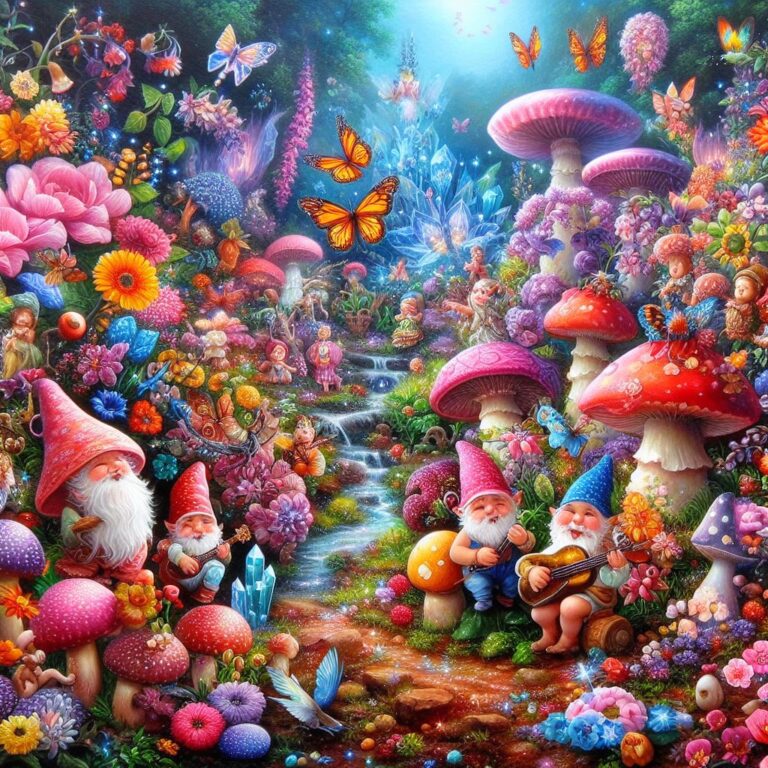From Grumpy Guardians to Whimsical Wonders: A History of Garden Gnomes
Garden gnomes have been a popular garden ornament for over a century. These small, whimsical figures are usually depicted as bearded men wearing pointed hats and boots, and are often seen holding various items such as fishing rods, watering cans, or shovels. Despite their popularity, the history of garden gnomes is somewhat mysterious and shrouded in folklore. In this article, we will explore the fascinating history of garden gnomes, from their origins to their current popularity.
Origins of Garden Gnomes
The origins of garden gnomes are somewhat murky, but it is widely believed that they originated in Germany in the mid-19th century. The first garden gnomes were made of clay and were originally created as decorations for wealthy homeowners’ gardens. These early garden gnomes were not the friendly, whimsical figures we know today; instead, they were depicted as grumpy, surly creatures who were said to be guarding the treasures of the earth.
It wasn’t until the 1870s that garden gnomes began to take on the more friendly, whimsical appearance we associate with them today. This was largely due to the influence of German artist Philipp Griebel, who began creating small, cheerful garden gnomes out of terracotta. Griebel’s garden gnomes were much smaller than the earlier, grumpy versions, and they were often depicted engaged in various activities such as fishing, gardening, and playing musical instruments.
Garden Gnomes Go Global
Garden gnomes became incredibly popular in Germany, and by the early 20th century, they had spread throughout Europe. However, it wasn’t until the 1960s that garden gnomes became a truly global phenomenon. In the United States, garden gnomes were initially seen as a bit of a novelty, and they were often sold as kitschy decorations for suburban lawns.
However, by the 1970s, garden gnomes had become a full-blown trend, and they were soon popping up in gardens all over the country. This was largely due to the influence of television shows like The Brady Bunch, which featured garden gnomes prominently in several episodes. The popularity of garden gnomes continued to grow throughout the 1980s and 1990s, and today, they are a common sight in gardens all over the world.
Garden Gnomes in Pop Culture
Over the years, garden gnomes have become more than just a garden ornament; they have also become a part of popular culture. Garden gnomes have appeared in movies, television shows, and even music videos. In the 1980s, British band Black Lace released a song called “Do the Conga,” which featured a music video that prominently featured garden gnomes. The video was a hit, and it helped to cement garden gnomes as a beloved pop culture icon.
Garden gnomes have also appeared in several movies, including the 2001 film Amélie, in which the title character sends her father’s garden gnome on a trip around the world. In the film Gnomeo & Juliet, garden gnomes take on the roles of the titular characters in a retelling of Shakespeare’s classic play. The popularity of these movies helped to further increase the popularity of garden gnomes.
Controversy Surrounding Garden Gnomes
Despite their popularity, garden gnomes have also been the subject of controversy over the years. In the 1990s, the town of Winkelried, Switzerland, made headlines when it banned garden gnomes from public spaces. The ban was enacted after a group of pranksters began stealing garden gnomes from people’s yards and placing them in a public square in the town. The ban sparked a heated debate about the role of garden gnomes in society, with some arguing that they were harmless decorations and others arguing that they were a blight on the landscape.
More recently, garden gnomes have become a target of theft and vandalism. In some cases, entire collections of garden gnomes have been stolen from people’s yards, while in other cases, individual gnomes have been smashed or stolen. Some garden gnome owners have taken to installing security cameras and even setting traps to catch the culprits.
Despite these controversies, garden gnomes remain a popular garden decoration. In fact, in 2013, a group of garden gnome enthusiasts in the UK founded the Gnome Reserve and Wildflower Garden, a park dedicated to garden gnomes. The park features over 4,000 garden gnomes, as well as a gnome museum and several gnome-themed activities.
Conclusion
In conclusion, the history of garden gnomes is a fascinating one. From their origins in Germany in the mid-19th century to their current status as a beloved garden decoration and pop culture icon, garden gnomes have come a long way. While they have been the subject of controversy over the years, their popularity shows no signs of waning. Whether you love them or hate them, it is clear that garden gnomes have become an enduring part of our culture.



